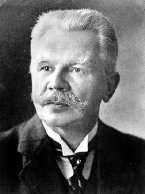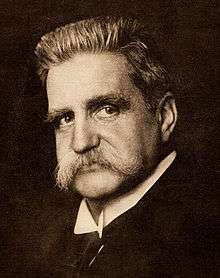1911 Swedish general election
General elections were held in Sweden between 3 and 24 September 1911,[1] the first election in Sweden with universal male suffrage.[2] The Free-minded National Association (FL) emerged as the largest party, winning 102 of the 230 seats in the Second Chamber of the Riksdag.[3]
| |||||||||||||||||||||||||
All 230 seats to the Riksdag | |||||||||||||||||||||||||
|---|---|---|---|---|---|---|---|---|---|---|---|---|---|---|---|---|---|---|---|---|---|---|---|---|---|
| |||||||||||||||||||||||||
| |||||||||||||||||||||||||
Kingdom of Sweden
|
|---|
 |
| This article is part of a series on the politics and government of Sweden |
|
|
|
Related topics |
As a result of the election, the General Electoral League's Arvid Lindman resigned as Prime Minister and was replaced by FL leader Karl Staaff.
Results
 | ||||||
| Party | Votes | % | Seats | +/– | ||
|---|---|---|---|---|---|---|
| Free-minded National Association | 242,795 | 40.2 | 102 | –3 | ||
| General Electoral League | 188,691 | 31.2 | 64 | –27 | ||
| Social Democratic Party | 172,196 | 28.5 | 64 | +30 | ||
| Other parties | 292 | 0.0 | 0 | New | ||
| Invalid/blank votes | 3,506 | – | – | – | ||
| Total | 607,480 | 100 | 230 | 0 | ||
| Registered voters/turnout | 1,066,200 | 57.0 | – | – | ||
| Source: Nohlen & Stöver | ||||||
gollark: I don't really have good* package ideas.
gollark: Okay, yes, I COULD in THEORY do this.
gollark: Or private.
gollark: They seem to be mostly antimemetic.
gollark: Bots do approximately know their latency, so do that.
References
- Nohlen, D & Stöver, P (2010) Elections in Europe: A data handbook, p1858 ISBN 978-3-8329-5609-7
- Edebalk, Per Gunnar (2000). "Emergence of a Welfare State – Social Insurance in Sweden in the 1910s". Journal of Social Policy. 29 (4): 537–551. doi:10.1017/S0047279400006085.
- Nohlen & Stöver, p1871
This article is issued from Wikipedia. The text is licensed under Creative Commons - Attribution - Sharealike. Additional terms may apply for the media files.


